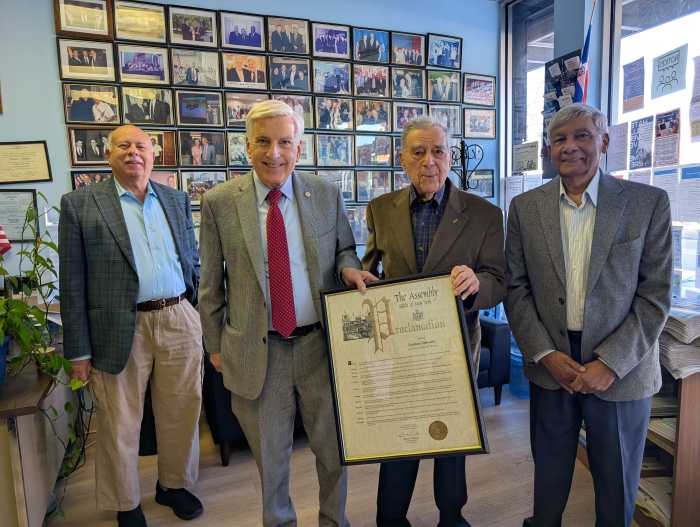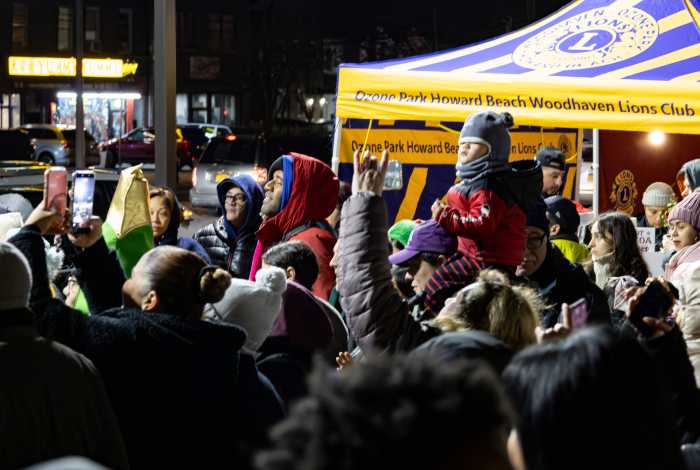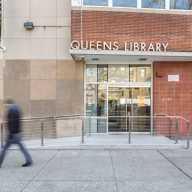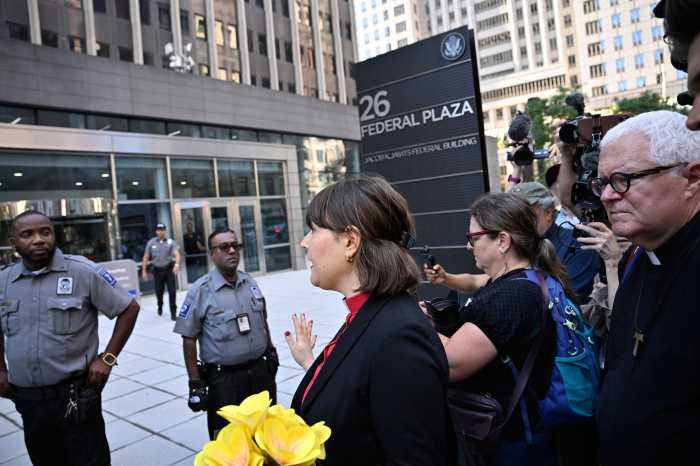Council Member Lynn Schulman came under fire at a NYPD community council meeting in Richmond Hill Tuesday night for her vote in favor of the How Many Stops Act, which requires police officers to document low-level investigative encounters with the public.
Several community members and residents accused Schulman at the 102nd Precinct Community Council meeting on Feb. 6 of backing legislation that they say will tie up the NYPD in unnecessary paperwork, which they claim will reduce emergency response times.
Additionally, several residents also argued that the law will burden the already overworked and understaffed police department with more tedious tasks.
Schulman, one of 44 council members who voted in favor of the legislation, says her vote came after scrutinizing what the bill meant for officers and what exactly low-level investigative encounters involve—such as documenting the age, race and gender of who they stop and why such a stop was made. Furthermore, she said, she received numerous calls from constituents in her district urging her to support it.
“I will tell you that in Kew Gardens, and Forest Hills, and parts of Richmond Hill, we had a lot of calls asking for us to vote for it,” Schulman said.
The council member encouraged the group to read the legislation fully to understand what defines investigative encounters and promised that more work would be done to fine tune the bill further.
“The council is working right now with the mayor’s office to figure out the best way to implement it so that it doesn’t impede public safety,” Schulman said.
The legislation, dubbed the How Many Stops Act, requires officers to document level 1 encounters on their smartphones, in addition to documenting Level 3 encounters that they do now. Level 3 stops are when officers have “reasonable suspicion” or “probable cause” for an arrest.
Level 1 encounters are defined as investigative encounters, where officers interact with a member of the public for investigative purposes. The legislation distinguishes investigative encounters from casual conversations with the public.
Supporters of the bill say this extra step helps to demystify police interactions with the public, holds officers accountable for allegations of abuse of power, and collects data that would otherwise be left unreported.
Despite the distinction between the levels of encounters, residents still showed skepticism about the bill—a bill that Mayor Eric Adams vetoed but was passed by a city council super-majority, thereby overriding his veto.
Critics of the Stops Act say having officers document level 1 encounters dehumanizes police communications with the public by forcing a report after every interaction.
One resident pointed out that although police are not required to fill out physical paperwork, being on their phones more often because of the extra reporting could expose officers to public scrutiny — being caught on their phones more often.
Police backers also say the data of those encounters could be manipulated to create a narrative of discrimination and racial bias within the NYPD — a continued claim made by many in and outside of law enforcement.
Council Member Joann Ariola, who voted against the bill and was in attendance, was not subject criticism Tuesday night. She aired her views on the legislation, and said that it had gone too far.
“This should have died in committee. It should have never come to the committee,” Ariola said.

































